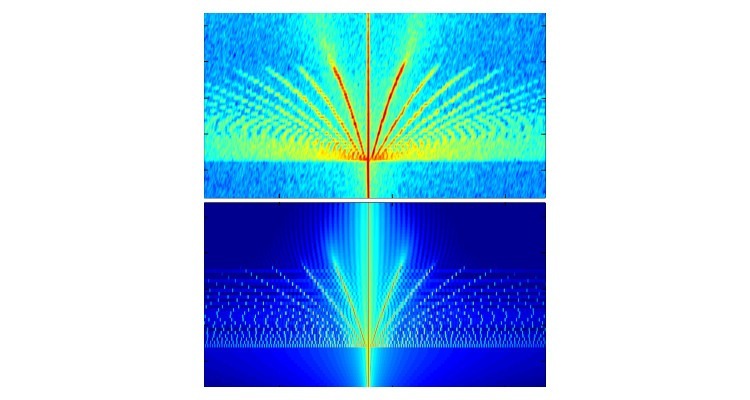Researchers from laboratory Matériaux et Phénomènes Quantiques have shown that crystalline nanomechanical resonators are affected by surface fluctuation mechanisms that are ubiquitous in condensed matter.
High-Q nanomechanical resonators are becoming central with the development of quantum optomechanics and nanomechanical sensing. Despite this chief position in modern physics, we still lack an exact understanding of their dissipation mechanisms, which remain subject to speculation and debate. The paper “Microscopic nanomechanical dissipation in gallium arsenide resonators” is a careful experimental and theoretical study that brings answers to open questions in this field.
The investigation is carried on state-of-the-art crystalline nanoresonators, which are generally perceived as best candidates for applications. Thanks to nanofabrication control and modeling of phonon-phonon interactions, the work disentangles loss channels affecting these nano-systems, finally pinpointing the importance of surface dissipation. The latter is shown to originate from fluctuating two-level systems (TLS), mainly localized at surfaces, which appear to be the dominating source of noise and loss.
Hence crystalline nanomechanical devices, just like superconducting qu-bits and resonators, are finally governed by fluctuations mechanisms that are ubiquitous in condensed matter. These mechanisms could be quenched at ultra-low temperature and with improved surfaces.

A nanomechanical resonator. The fluctuating Two-Level Systems (TLS) localized at the surfaces dissipate the mechanical energy of vibration.
Contact:
ivan.favero@univ-paris-diderot.fr
Reference:
Microscopic nanomechanical dissipation in gallium arsenide resonators, M. Hamoumi, P. E. Allain, W. Hease, E. Gil-Santos, L. Morgenroth, B. Gérard, A. Lemaître, G. Leo, and I. Favero, Phys. Rev. Lett. 120, 223601 (2018)
À lire aussi

Unravelling the nonlinear generation of designer vortices with dielectric metasurfaces
Researchers from the DON team have demonstrated and analyzed the generation of high-purity second-harmonic vortices with dielectric metasurfaces. These results are published in Light: Science and Applications. Vortex beams are currently drawing a great deal of...

Giuseppe Leo elected IUF Senior Member
Giuseppe Leo, Professor at Université Paris Cité and head of the DON team at MPQ laboratory, has been elected Senior Member of the Institut Universitaire de France (IUF), with the title of Fundamental Chair. The role of the Institut Universitaire de France is to...

Aloyse Degiron is awarded an ERC Proof of Concept grant
Aloyse Degiron, CNRS senior researcher at the MPQ laboratory, has just been awarded an ERC Proof of Concept grant. Aloyse Degiron A Metamaterial-based technology to create Electricity from Light (AMELI) The ERC POC AMELI aims to convert light into electricity using...

A light-controlled mechanical frequency comb
Through optomechanical experiments in a semiconductor micro-resonator, researchers from the DON team of the MPQ laboratory, in collaboration with the Center for Nanoscience and Nanotechnology, have shown that a coupling between different forms of energy can give rise...
